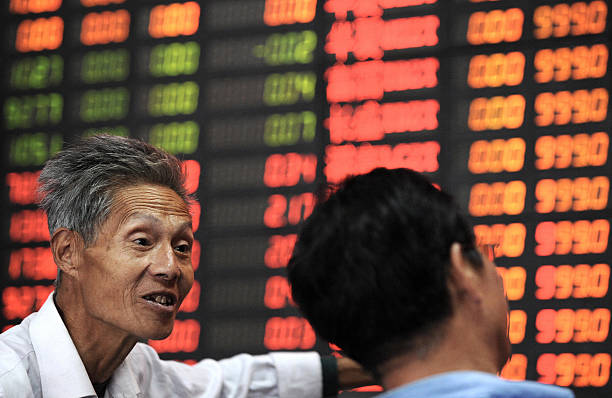
In an assertive response to a staggering $7 trillion market downturn, Chinese companies are intensifying their share buyback efforts, signaling a robust participation in a broader initiative to arrest the decline of the world’s second-largest stock market. This maneuver is part of a concerted strategy to bolster market confidence amid challenging conditions.
The Scale of Corporate Buybacks
Recent data reveals a notable uptick in share repurchase activities by firms listed on mainland China and Hong Kong. Mainland companies have allocated approximately 14 billion yuan to buybacks, while their counterparts in Hong Kong have expended about HK$21 billion for similar endeavors, setting a new record since Bloomberg initiated its data compilation in 2021.
Share repurchases have long been a staple in Beijing’s strategic arsenal to support the market during downturns. Recent appeals from authorities underscore a renewed emphasis on such measures as a stabilizing force. However, despite these efforts, the magnitude of buybacks is often perceived as insufficient to counteract the broader market malaise without substantial state intervention and aggressive policy measures.
Insight from Industry Experts
Industry observers and fund managers, like Jian Shi Cortesi of GAM Investment Management, regard corporate buybacks and state fund purchases as constructive signals. These actions suggest that companies perceive their stocks as undervalued, given their intrinsic understanding of their business prospects. Notably, corporations like WuXi AppTec Co and Will Semiconductor Co have spearheaded these initiatives on the mainland, reacting to the adverse impact of potential US sanctions. In Hong Kong, tech giant Tencent Holdings Ltd and delivery powerhouse Meituan have led the charge in buybacks.
Despite these proactive steps, the broader market has remained under pressure, as evidenced by the mainland benchmark CSI 300 Index’s 6.3% decline. This scenario underscores the limited influence individual firms can exert in reversing market trends.
Signs of Policy Support and Market Reaction
A glimmer of hope emerged with the market’s rally following indications of more decisive policy support. Noteworthy developments included commitments from the sovereign wealth fund to augment its exchange-traded funds holdings and anticipations of regulatory briefings to President Xi Jinping, fueling optimism for a more unified approach to market stabilization.
Analyzing the Effectiveness of Buybacks
The recent surge in buybacks, while indicative of corporate confidence, also highlights the complexities of China’s market challenges. Observers like Kenny Wen, head of investment strategy at KGI Asia Ltd, note that while buybacks have historically signaled potential market bottoms, the current scenario is differentiated by underlying structural issues. This distinction suggests that, despite potential for short-term market rebounds, long-term challenges remain formidable.
Table: Recent Share Buyback Activities
| Company | Market | Amount Spent on Buybacks | Impact on Share Price |
|---|---|---|---|
| WuXi AppTec Co | Mainland China | 14 billion yuan | Mixed |
| Will Semiconductor Co | Mainland China | Not specified | Mixed |
| Tencent Holdings Ltd | Hong Kong | HK$21 billion | Mixed |
| Meituan | Hong Kong | Not specified | Mixed |
This table illustrates the financial commitment of leading companies in their share repurchase efforts and the nuanced impact these actions have had on their stock prices amid broader market trends.
Forward Outlook
The recent uptick in share buybacks among Chinese companies is a testament to the corporate sector’s role in navigating market volatility. While these actions reflect a proactive stance in reinforcing market confidence, their effectiveness is intricately tied to broader economic conditions and policy frameworks. The current market scenario in China calls for a delicate balance between immediate stabilizing actions and addressing underlying structural challenges to foster sustainable market recovery.
As the market navigates through this turbulent phase, the interplay between corporate initiatives and policy measures will be crucial in shaping the trajectory of China’s stock market. Stakeholders remain watchful, hopeful that combined efforts will eventually steer the market towards stability and growth.
Featured image credit: MARK RALSTON via Getty Image
